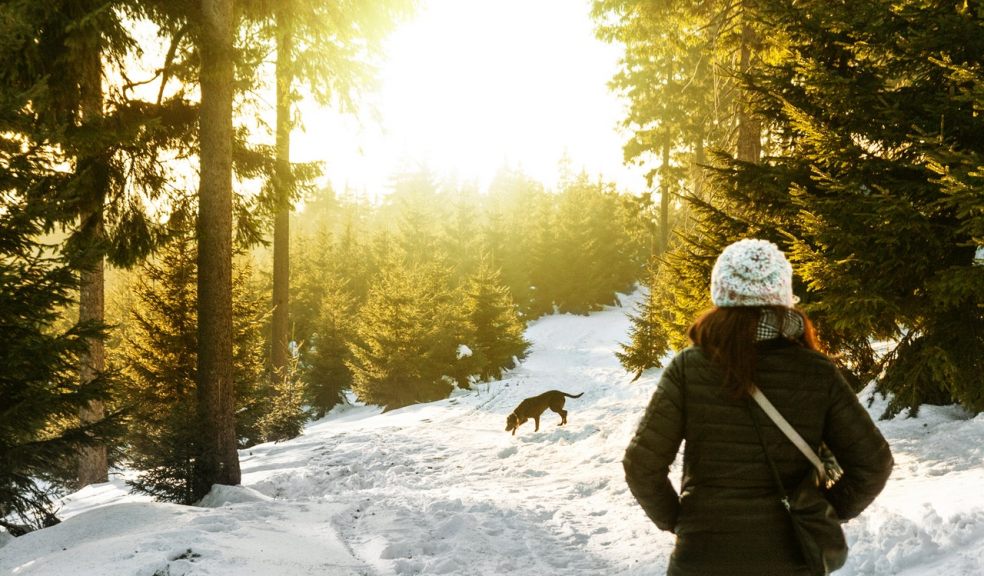
Keeping your dog safe this winter
As winter comes into play, the freezing temperatures can be dangerous for not only you but your dog too. With snow heading to Devon as we speak, knowing the right tips and techniques can ensure your dog stays safe and out of any danger.
What to Watch Out For
Just like with every season, the winter months provide several dangers that could hurt a dog. There are various things that you can look out for to protect your dog, one of these being frozen water. Thin ice can be a danger to puppies and dogs who may not understand where they are stepping. If the ice is thick, your dog can still lose control and slip, resulting in them tearing a ligament or muscle. Antifreeze is another factor to watch out for, as even a little bit of antifreeze could prove fatal to your pet. It’s best to keep antifreeze away from your dog and be sure to clean up any spills as quickly as possible.
Stimulating Fur Growth
There are various ways on how you can acclimate your dogs to outdoor temperatures, such as by stimulating their fur which will help it grow thicker. The thicker the coat is, the more protection your dog will have. Indoor pets won’t be well equipped to spend time outdoors, so make sure you bring them back indoors quickly if it’s extremely cold. There are ways to get your pets adjusted to the colder climate by offering them small bursts of cold weather in 2-3-hour periods, starting in autumn. Once temperatures begin to drop further, your dog will be able to acclimate.
Offer a Jumper
Puppies are more likely to not do well in the cold because they have less fat and muscle mass than adult dogs. Muscle and fat increase metabolism, which helps keep them warm. Puppy coats will not be as long or thick to help protect them. Therefore, your puppy or adult dog may benefit greatly from a dog jumper, especially going outside to go to the toilet. While some dogs may be initially apprehensive about wearing a jumper, if you introduce it over a period of time, most dogs will soon take to it.
Protect their Paws
To protect your dog further, why not give them a whole new outfit in the form of a jumper and a pair of boots. Your dog’s paws are exposed to salt, ice, and snow in the winter months (any of which could cause harm to their pads or paws). Your dog may even get frostbite if they are out in the cold too long. Make sure that you look out for little ice or snowballs that can get trapped between their toes or in their foot hair. Iced pavements and salt can cause their paws to become chapped too. This can be avoided if you purchase boots that they can wear when on walks.
Fly-Away Fur
Dogs often develop dry skin and dull coats throughout the winter months. To tackle the problem, there are several fatty acid supplements that may help reduce the drying effects that winter can bring to your dog. Be sure to ask your veterinarian for advice, he will be able to point you in the right direction. A humidifier in your home can be another way to reduce dry skin in your dog, as well as benefiting your entire family’s skin too.
Adjust Feeding Schedules
The more food your dog eats, the more fuel they will burn, which will help them stay warm during the winter months. Your dog needs as many calories as possible to generate body warmth, especially if they are outdoor pets and can’t rely on your lap to stay warm. Puppy food diets may provide more calories, but you may need to alter the portion size. You may also be interested in giving your pet grain free dog food. Companies like Fish4Dogs provide a wide range of healthy and nutritious foods that can bring a wide array of health benefits to your dog, helping them with joint mobility and brain and eye development.
Outside Shelter
If your dog is outside in the cold and rain getting wet, their body heat will soon be stripped away, exposing them to more risks of getting a cold. When fur is untangled, dry and clean, it retains a warm layer of air next to your dog’s skin that protects them further from the cold. Make sure that you provide your outdoor dog with a kennel or other shelter to keep them warm and dry. That way, your dog will have time to get used to sleeping indoors and know when to take shelter out of the rain and wind. Make sure that the accommodation you provide isn’t too large.
Stay Safe When Outdoors
When temperatures drop and snow begins to fall, ice can be a big risk factor for both you and your dog. If you take your dog out for walks each day, it’s important that you assess your route before heading out the door. Pavements and roads can become icy, which is a hazard for both of you, so ensure you take precautionary measures first to test whether the roads are safe for you both to walk on. The last thing you want to happen is to fall over and injure yourself. You should invest in a good pair of walking shoes or boots that are well equipped with dealing with snow and ice. Also, it’s advised not to go out for walks in the dark, especially if you are walking in a dimly lit area. You can recognise black ice in the daytime, however, when it gets dark and visibility decreases, you may not see it, which could cause you to slip and fall over.
Preventing Problems
As a dog owner, you should know your pet inside out. Their wants and needs should be your top priority, so making the right arrangements beforehand can reduce your stress levels and ensure your dog is safe and happy. When an outdoor shelter isn’t available, your pet should be indoors whenever temperatures drop to 40 degrees or less. You will want your dog to be happy, healthy and, most importantly, safe. So, with that in mind, make sure that you keep their best interests at heart and allow them to come into the home should temperatures drop significantly. Simple steps such as providing your dog with a jumper can make all the difference.
Seeking Help
If you have any queries and want to put your mind at ease, you may benefit from taking a trip to your local vet. Vets are highly qualified in this field and will be able to give you the right tips and techniques to ensure you and your dog stay safe this winter. If you notice any differences in your dog’s behaviour, your vet will be able to get to the root of the problem and offer their expert advice.
There is a wide range of tips and techniques that you can take on board to ensure your dog stays safe this winter. When going for a walk, it’s best to take your dog before dark. With snow and icy conditions on the road, you and your dog’s safety should be your number one priority.



















